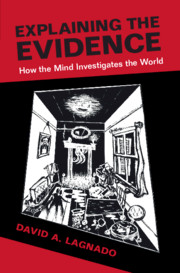Book contents
- Explaining the Evidence
- Explaining the Evidence
- Copyright page
- Dedication
- Contents
- Figures
- Tables
- Preface
- Acknowledgements
- Chapter 1 The Cliff Death
- Chapter 2 Models in Mind
- Chapter 3 Causal Modelling
- Chapter 4 Thinking beyond Biases
- Chapter 5 Expert Reasoning in Crime Investigation
- Chapter 6 Questions of Evidence
- Chapter 7 Competing Causes
- Chapter 8 Confirmation Bias
- Chapter 9 Telling Stories
- Chapter 10 Idioms for Legal Reasoning
- Chapter 11 Causal Reasoning in a Time of Crisis
- References
- Index
Chapter 2 - Models in Mind
Published online by Cambridge University Press: 20 October 2021
- Explaining the Evidence
- Explaining the Evidence
- Copyright page
- Dedication
- Contents
- Figures
- Tables
- Preface
- Acknowledgements
- Chapter 1 The Cliff Death
- Chapter 2 Models in Mind
- Chapter 3 Causal Modelling
- Chapter 4 Thinking beyond Biases
- Chapter 5 Expert Reasoning in Crime Investigation
- Chapter 6 Questions of Evidence
- Chapter 7 Competing Causes
- Chapter 8 Confirmation Bias
- Chapter 9 Telling Stories
- Chapter 10 Idioms for Legal Reasoning
- Chapter 11 Causal Reasoning in a Time of Crisis
- References
- Index
Summary
In Chapter 2 I argue that we reason by building and manipulating mental models. These causal models allow us to predict, control and explain the world around us. They are idealized and schematic, which reduces complexity but can lead to reasoning biases. I also present an account of how we generate these models, by using intuitive theories of how things work and how humans behave. This allows for learning and inference at multiple levels, and it helps explain our proficiency at explaining the world.
- Type
- Chapter
- Information
- Explaining the EvidenceHow the Mind Investigates the World, pp. 14 - 31Publisher: Cambridge University PressPrint publication year: 2021

